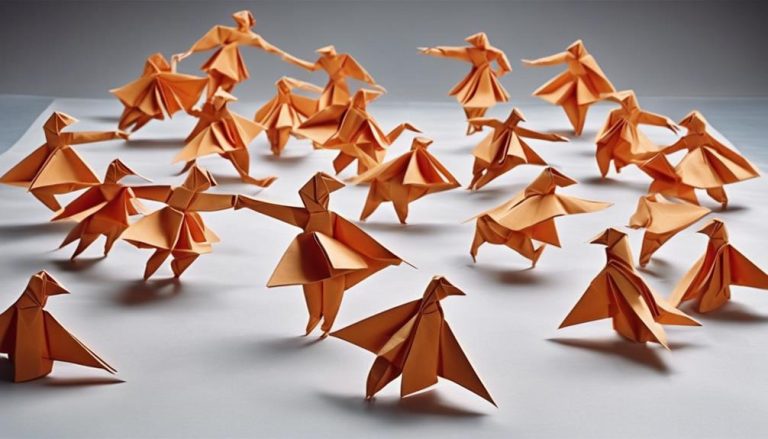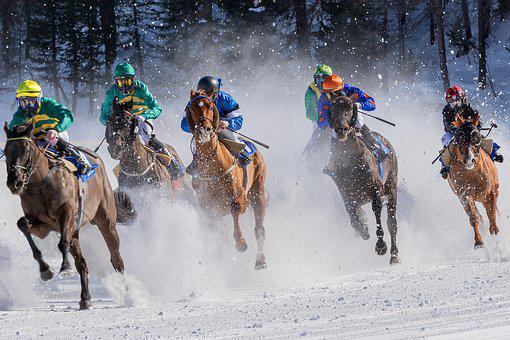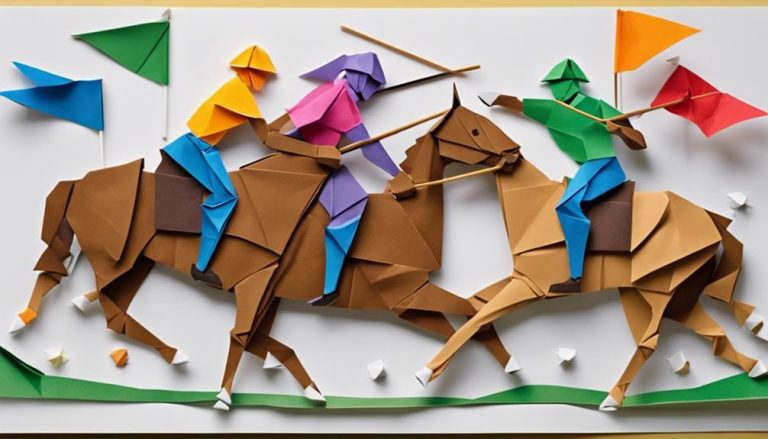General Rules of Pencak Silat
You might be thinking that pencak silat rules are complex, but fear not, they're structured for clarity and fairness. Have you ever wondered what specific techniques are strictly off-limits in a match? Understanding these rules not only guarantees a safe environment but also showcases the artistry and skill of this traditional martial art. So, let's unravel the intricacies of general Pencak Silat rules, and uncover the key elements that shape this fascinating combat sport.
Scoring System
When evaluating a match in Pencak Silat, the scoring system plays a pivotal role in determining the victor. Understanding the intricacies of how points are awarded can make or break your performance. In this dynamic martial art, strategy tactics are key. Each move must be calculated, each step intentional. Defensive techniques are not just about blocking but also about setting up your opponent for a counterattack. It's a game of mental chess, where every feint and parry can shift the tide in your favor.
On the offensive side, maneuvers need to be executed with precision. Offensive maneuvers are about more than just striking; they are about creating openings and exploiting weaknesses. Each strike must be deliberate, each kick well-timed. However, beware of point deductions. In the heat of the match, it can be easy to get carried away and commit fouls that cost you valuable points. Stay disciplined, stay focused.
To excel in Pencak Silat, you must master the balance between offense and defense, knowing when to strike and when to defend. The scoring system is unforgiving, rewarding those who can blend cunning strategy with powerful execution. So, hone your skills, sharpen your mind, and step onto the mat with confidence. The way to victory is through calculated moves and flawless technique.
Attire and Equipment
Proper attire and equipment play an important role in your performance and safety during Pencak Silat matches. The choice between traditional versus modern gear in Pencak Silat often involves a balance between cultural significance and practicality. Traditional attire connects you to the roots and history of the martial art, while modern equipment may offer enhanced comfort and functionality.
In Pencak Silat, attire typically includes a uniform known as 'Pencak Silat uniform.' The traditional attire consists of loose-fitting pants and a long-sleeved shirt, often made of traditional fabrics like cotton or silk. On the other hand, modern outfits may incorporate more breathable materials and come in various designs and colors. Let's explore the main differences between traditional and modern Pencak Silat attire in the table below:
| Aspect | Traditional Attire | Modern Attire |
|---|---|---|
| Fabric | Cotton or silk | Breathable and moisture-wicking fabrics |
| Design | Simple and traditional patterns | Diverse designs and colors |
| Comfort | May feel restrictive but carries cultural significance | Offers enhanced comfort and flexibility for movement |
| Practicality | May limit movement but emphasizes tradition | Prioritizes functionality and ease of movement |
Selecting the right attire and equipment that aligns with your preference and goals is essential for a successful and enjoyable Pencak Silat experience.
Match Duration
To maximize your performance and strategy in Pencak Silat matches, understanding the specific duration of each match is important for effective planning and execution. Match duration plays a critical role in shaping your approach towards the fight. Here are some key points to take into account regarding match duration:
- Time Management: Efficient time management is important during a Pencak Silat match. You need to allocate your time wisely between offensive and defensive maneuvers to outsmart your opponent and score points effectively.
- Strategy: Having a well-thought-out strategy tailored to the match duration is essential. Whether it's a short burst of aggressive attacks or a more conservative approach to wear down your opponent over time, your strategy should align with the duration of the match.
- Endurance: Endurance is an essential factor in Pencak Silat matches, especially during longer durations. Building your stamina and endurance through training is key to maintaining peak performance throughout the fight.
- Pacing: Proper pacing is necessary to make sure you can sustain your energy levels and perform at your best until the end of the match. Understanding when to push the tempo and when to conserve energy is a skill that can give you an edge over your opponent.
Prohibited Techniques
During Pencak Silat matches, it is essential to be aware of and adhere to the list of techniques that are prohibited to maintain fair play and safety for all competitors.
—
In Pencak Silat, certain dangerous techniques are strictly prohibited during matches to ensure the safety of the practitioners and maintain the integrity of the sport. Engaging in these prohibited techniques can lead to severe consequences, including injuries to yourself or your opponent, disqualification from the match, or even suspension from future competitions. It is critical to understand the gravity of these rules and the impact they have on the practice and culture of Pencak Silat.
To uphold the principles of fair play and sportsmanship, practitioners must adhere to the training restrictions and safety precautions set forth by the governing bodies of Pencak Silat. By following these guidelines, you not only protect yourself and your fellow competitors but also uphold the values of respect and discipline that are integral to this martial art.
Below is a table outlining some of the commonly prohibited techniques in Pencak Silat:
| Prohibited Techniques | Consequences | Training Restrictions |
|---|---|---|
| Eye gouging | Severe injury, disqualification | Emphasis on controlled movements |
| Groin strikes | Disqualification, suspension | Controlled sparring only |
| Neck attacks | Serious injury, disqualification | No-contact drills only |
| Joint locks | Disqualification, injury | Controlled application in training |
| Headbutts | Disqualification, serious injury | Strictly prohibited in training |
Judging Criteria
What are the key considerations for determining scoring in Pencak Silat matches? When judging a Pencak Silat match, several important factors come into play to determine the scores, reflecting the fighters' skills and performance. The judging criteria focus on Technique execution, Timing, and distance.
- Technique Execution:
- Precision and control in executing strikes, blocks, and other techniques are essential.
- Fluidity and mastery in applying a variety of techniques demonstrate a fighter's proficiency.
- Timing:
- The ability to land strikes at the right moment, anticipating the opponent's moves, showcases strategic thinking and quick reflexes.
- Well-timed counters and attacks can significantly impact the judges' impressions.
- Distance:
- Maintaining an ideal distance from the opponent is crucial for launching effective attacks and defending against incoming strikes.
- Maneuvering skillfully to control the distance can influence the judges' assessment of a fighter's dominance in the match.
In Pencak Silat, judges carefully observe how competitors execute techniques, manage timing, and control the distance between themselves and their opponents. These aspects not only demonstrate the fighters' skills but also determine the scores awarded in the match, reflecting the artistry and effectiveness of their performance.
Frequently Asked Questions
Is There a Specific Age Limit for Participating in Pencak Silat Competitions?
In pencak silat competitions, there are age restrictions based on different categories. Training requirements vary but are essential for all skill levels. Competitions follow specific rules, emphasizing technique and respect for opponents.
Are There Weight Classes or Divisions in Pencak Silat Competitions?
In Pencak Silat competitions, weight classes are not typically used. Instead, matches are often based on skill level, ensuring fair competition and requiring strategic prowess. This approach emphasizes technique over sheer size.
Are There Any Specific Dietary or Training Recommendations for Pencak Silat Practitioners?
To excel in Pencak Silat, focus on nutrition tips for energy, training techniques for strength. Prevent injuries with proper warm-ups, cool-downs. Mental preparation is key for focus. Stay disciplined, listen to your body.
Are There Any Traditional Rituals or Customs Associated With Pencak Silat Competitions?
In Pencak Silat competitions, traditional ceremonies hold immense cultural significance. These rituals, passed down through generations, symbolize respect, unity, and honor among practitioners. Embrace the customs with zeal, for they enrich your journey.
Are There Different Styles or Forms of Pencak Silat That Are Recognized in Competitions?
In Pencak Silat competitions, various recognized styles and forms showcase diverse techniques stemming from different origins and regional influences. These styles must adhere to specific rules and regulations to maintain the integrity of the sport.






